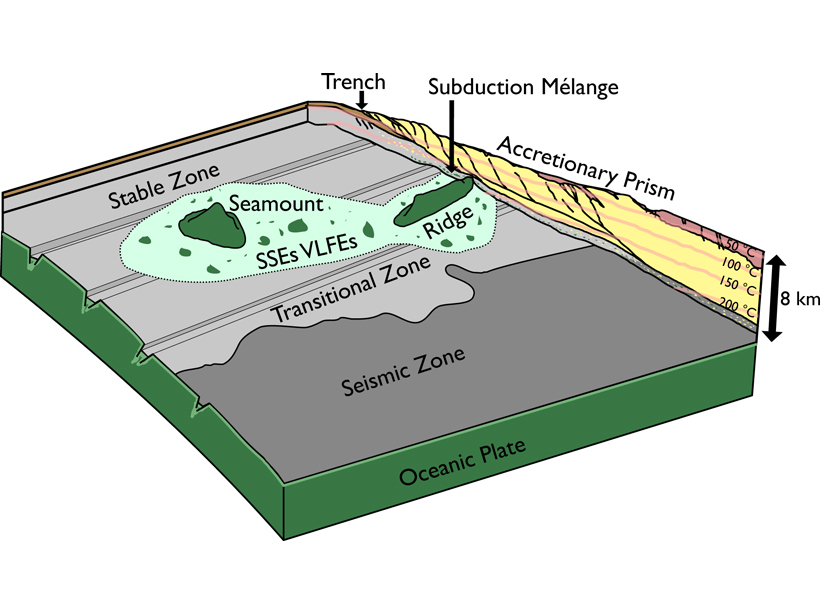Source: Geochemistry, Geophysics, Geosystems
While great earthquakes originate in the locked portion of the plate interface of a subduction zone, a transitional zone downdip can produce slow slip events and low frequency earthquakes. These slow earthquake phenomena release strain energy over hours to months rather than seconds to minutes for typical earthquakes.
Phillips et al. [2020] examine rocks exhumed from updip of a locked segment in southwest Japan. These rocks consist of basaltic blocks (e.g. former seamounts) in a shale matrix. They find that this mix strain is localized along the margins of the basaltic blocks in the form of faults, but deformation is distributed in the shale matrix.
The authors model stress and pore fluid pressure in these rocks and show that the mix of velocity-weakening margins of basaltic blocks(for which frictional resistance decreases with sliding velocity) with velocity-strengthening shale can produce a range of slow earthquake phenomena both updip and downdip of the locked portion.
Citation: Phillips, N. J., Motohashi, G., Ujiie, K., & Rowe, C. D. [2020]. Evidence of localized failure along altered basaltic blocks in tectonic mélange at the updip limit of the seismogenic zone: Implications for the shallow slow earthquake source. Geochemistry, Geophysics, Geosystems, 21, e2019GC008839. https://doi.org/10.1029/2019GC008839
—Ulrich Faul, Editor, Geochemistry, Geophysics, Geosystems
Text © 2020. The authors. CC BY-NC-ND 3.0
Except where otherwise noted, images are subject to copyright. Any reuse without express permission from the copyright owner is prohibited.

